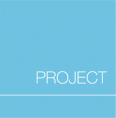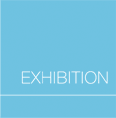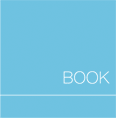|
Cloth & Culture
NOW
the artists - Kadri Viires, Estonia
My Textile –– My Text Style
Textile, fabrics and knitwear are not
very durable. They are not able to withstand the ravages of time
and therefore allow us to build up a national identity based
on a heritage extending into the distant past. My country of
origin, Estonia, as a borderland, is located in a region where
two large cultural spheres––the
Protestant west and the Orthodox east collide––an area
where borders and cultural identities, primarily in the mental
or spiritual sense, are clearly discernable. Living on our little
plot of land on the shores of the Baltic Sea we consider ourselves
one of the oldest settled peoples. Throughout our history colour
has been added to our cultural development through influences from
the north, south, east and west, as well as from land and sea.
But the primary influence and modifier of all cultures is nature
and the environment in which those cultures operate, and this also
applies here in Estonia. We live in northern Europe where the central
elements of our natural environment are the forest, the sea, and
the four clearly differentiated seasons along with the resulting
calendar and rhythm of life.
Traditional fibres derived from animals or plants such as sheep,
nettles, hemp and flax, and the processing and knitting or weaving
of these are generally characteristic of this entire geographical
region, and so to emphasise their cultural uniqueness would be
risky. But, historical Estonian textiles, as in many other cultures,
contain unique codified cultural texts in the form of symbols and
patterns which speak of the specific local culture, relationships
with the surrounding natural environment, the skills of the maker,
as well as the status and taste of the wearer. The vocabulary of
traditional Estonian textile designs and patterns is rich and their
names come from animals, plants, natural phenomena, objects, makers,
wearers or the piece's place of origin. From the world of animals
come such names as kirbukiri (flea pattern), ämblikukiri (spider
pattern), hanesilmakiri (goose eye pattern), kärbsetiivakiri (fly
wing pattern), rähnikiri (woodpecker pattern), rebasekiri (fox
pattern), karukäpakiri (bear paw pattern) and jänesejooksukiri
(hare's run). From the plant world come odraivakiri (barley
grain), pajulehekiri (willow leaf pattern) and marjakiri (berry
pattern). Natural phenomena and objects have inspired hapukapsakiri (sauerkraut
pattern), tähekiri (star pattern), kuukiri (moon
pattern), ankruristikiri (anchor pattern), saehambakiri (sawblade
pattern), sookiri (bog pattern), tuuleveskikiri (windmill
pattern) and vesirattakiri (waterwheel pattern). In terms
of people and regions giving names to patterns there are mõrsjakiri (bride's
pattern), Danish pattern, Swedish pattern, Latvian pattern, German
pattern and so forth. These designs and names for textile patterns
have provided inspiration for many creative artists and crafts
people practising traditional textiles at various times through
history.
How has all this influenced me as a textile
artist living and "writing" my
thoughts in textiles today?
One would assume that I, who work and have
worked for a long time collecting and teaching folk art, would
also express a clear national cultural identity dominated by traditional
elements and symbols. From the broader perspective of the culture
of art and identity, the analysis and stylisation of traditional
elements and their use in a contemporary context in a range of
areas plays an important role. Innovation and contemporary design
are possible when the materials are familiar.
For me, knowledge of the existing wealth of
folk traditions and the preserved heritage of folk art is very
important. In my textiles I have not interpreted specific, recognisable
traditional symbols, but have been inspired by nature, colours,
and the world view and folklore familiar to Estonians and our distant
linguistic relatives––the
people who speak Finno Ugric languages. In my work this tends to
be expressed in the form of an abstract connection with the heritage
of the culture of the natural world as well as with the spirituality
of folk traditions.
Once when I was on a field trip with students,
moving from one village to the next along the Ob River in a wooden
boat made from a single log, a local Khanty fisherman said to
me, "The Ob
is a very mysterious river. We are travelling on the upper river,
which belongs to the world of people, but underneath there is another
river, which belongs to the world of shadows. This is a two-storey
river." This legend of the two-storey river haunted me for
a long time until I was finally able to realise it for myself in
one of my painted silk fabrics titled "Two-storey river",
in which I used pale and opposing colours optically blended together.
Movements in nature, currents and winds
are also present in some of my works, mostly in the painted silk
pieces and with titles such as "Pilve moodustumine" (Formation
of a cloud), "Päikesevarjutus" (Eclipse
of the sun), "Paduvihm" (Downpour), "Vereringe" (Blood
circulation), etc. for which I gained inspiration from verbal imagery
in folklore and mythology. Movement is important, and to convey
this my fabrics make use of optical illusion and pointillist blending
of monochrome or opposing colours. Natural and folkloric patterns
can be expressed using textile imagery in a Nordic monochrome –– these
are a universal phenomena. Time and time again variations on archetypal
themes appear in cultural texts including textile patterns.
In my experimental textile pieces I also
tend to start from universal and social concepts. The creative
process is set in motion by the specific theme of an exhibition,
a play on words, the ambivalence and vision of how a piece might
materialise as a textile text. "Omand" (Ownership)
is that which I can physically touch and where I leave my fingerprints…"Hääletajad" (Voters)
expresses will or desire, and in whose hands there is the power
to direct the future…or choose…freely…
Regarding materials and techniques, the
influence and experience of other cultures provides inspiration.
Various fibrous materials, both traditional and experimental
offer untold opportunities for new combinations and discoveries –– for
new styles of writing.
I admire and enjoy the folk textiles of
different cultures –– knowing
that more than simple practicality and aesthetics have been concealed
within them. If only there were dictionaries to translate memory
that has been codified into symbols, maybe then we would discover
a common textile vocabulary in the images and worldviews of different
cultures.
Endeavouring to position Estonian textile art, as well as myself,
within the broader cultural space, I inevitably feel, at a certain
level, a familiarity with the attitudes and feeling for life that
exists in the Nordic environment. Being on the border adds flexibility,
tolerance and preparedness in both the reading and writing of textile
texts.
|









